Why “Grange“? Its origin is likely from the British English. The Oxford English Dictionary notes “British: a country house with farm buildings attached. Historical an outlying farm with tithe barns belonging to a monastery or feudal lord. Archaic: a barn. From Latin granum “grain”.
by Stanley R. Howe*
The National Grange came into being in 1867 because of the vision of Oliver Hudson Kelley, a Minnesota farmer and activist. He had long held that farmers, because of their independent and scattered nature, needed a national organization that would represent them much as unions were beginning to do for industrial workers. Farmers were at the mercy of merchants for both needed farm supplies and for marketing their crops. Railroads and warehouse companies were taking advantage of farmers as well.
The origins of the Grange in Maine extend back to the Farmer’s Clubs, which were organized in the 1850s. Each club debated agricultural and household issues while both men and women had their separate gatherings. The clubs began to decline after the Civil War and were soon merged into another movement that would attract many of Maine’s rural population.
The Grange (officially known as the Patrons of Husbandry) was organized in Washington, D.C. in 1867. It grew slowly during its early years, but arrived in Maine by 1873. The following year, the Maine State Grange was organized in Lewiston. By the end of 1874, there were sixty-four Granges and approximately 2,000 members. From the beginning, there was great interest in cooperative activities including offering insurance, advocating railroad and banking regulation, and promoting group purchasing. In 1876, the Order had grown to over 228 Granges with about 12,000 members.At first, the hard times of the 1870s served as a stimulus to membership growth, but the numbers began to decline as the decade passed. Prosperity returned and good leadership such as that provided by State Master (and later Governor) Frederick Robie of Gorham came into being.
The Grange began to take strong positions on legislative issues and educational reform. Libraries and reading were encouraged in Grange halls, as well as debates on a multitude of topics of interest to members. In many ways, the Grange served as an adult education resource for many Mainers.
In the 1880s Pomona Granges (county level) came into being. The State Grange raised funds for a Grange Cottage at Good Will Farm in Hinckley. This connection continued with members donating thousands of pennies to Good Will Hinckley while supporting the Grange Cottage.
A dramatic period of growth was witnessed during the years under State Master (and later U.S. Senator) Obadiah Gardner. The number of granges grew from 243 to 419; membership increased from 21,515 to 55,212. By 1907, Maine’s per capita grange membership was larger than any other state.
Legislatively the Grange supported prohibition and Rural Free Delivery. The Grange also advocated for strong local schools and increased funding for the University of Maine. The Grange worked with state governmental agencies to promote reform in Maine agricultural practices and protect the quality of fertilizer. In the Progressive era, the Grange supported election reforms such as the direct primary, recall, initiative and referendum, voting rights for women, and curbs on monopolies.
By 1914 with the passage of the Smith-Lever Act, the Grange worked closely with the Extension Service to assist in familiarizing farmers and their wives with new and improved scientific methods of farming and household management. The Grange also developed a close association with the Farm Bureau, which along with the Extension Service and 4-H clubs used Grange halls for meetings and activities throughout the 20th century.
For many rural and farm women, the Grange became a social refuge, which allowed them to meet other women and escape, however briefly, the onerous work of the household. From its earliest days and long before the ratification of the 19th Amendment to the U.S. constitution in 1920, the Grange granted women equal voting rights within the Order.
During World War II, the Grange supported men and women in combat by paying their dues and sending packages of clothing and food. Granges were also encouraged to buy war bonds, support rationing procedures and collect strategic materials.
Following the war, the Grange growth continued. In 1945, the Maine State Grange purchased a state headquarters at 146 State Street in Augusta. Faced with a major outbreak of forest fires in 1947, the headquarters became a center for the distribution of food, clothing and supplies to those who lost their homes during that disastrous time.
In the 1960s, the Grange took an active role in supporting the Maine Conservation Camp at Bryant Pond, building Rogers Hall from funds raised at bean suppers.
Changes in insurance laws, the growing popularity of television, the decline of farming and other demographic and cultural changes began to affect membership levels of the Grange after 1960. While the Order is still a factor in many towns through its community service role, and its halls are one of the icons of the State’s landscape, the number of Granges has dropped to about 180 and membership is now approximately 8,000. Many efforts are being made to revive interest in the Grange and encourage membership development with enhanced programming and membership benefits as incentives.
Pomona Granges do not have an actual physical location, but tend to meet at different Community Granges within the area.
*Photos have been added; text has been rearranged and slightly edited to accommodate integration with the Encyclopedia.
Additional resources
Guptill, Samuel Carleton. The Grange in Maine from 1874-1940. 1973. [University of Maine, Raymond H. Fogler Library, Special Collections; Maine State Library]
Howe, Stanley Russell. A Fair Field And No Favor : A Concise History Of The Maine State Grange. Augusta, Me. Maine State Grange. c1994.
Maine State Grange. “Granges in Maine.” http://mainestategrange.org/wp-content/uploads/2014/05/2017-Directory-of-Granges-.pdf
Murray, John Chick, 1860-? A Typical Meeting of York Pomona Grange. [York? Me. between 1920 and 1929. [Maine State Library]
Niles, Mary C. A History of Spragueville. Presque Isle, Me. The Author. 1983. [University of Maine, Presque Isle, Special Collections]
Ritual and Community: The Maine Grange. (photographs by Rose Marasco; catalog foreword by Frank Gohlke; essay by Elspeth Brown. Portland: University of Southern Maine, Art Department. 1992.
Sherman, Rexford Booth. The Grange in Maine and New Hampshire, 1870-1940. 1972. (Thesis (Ph.D.)–Boston University, 1972) [Mane State Library; University of Maine Presque Isle Library]


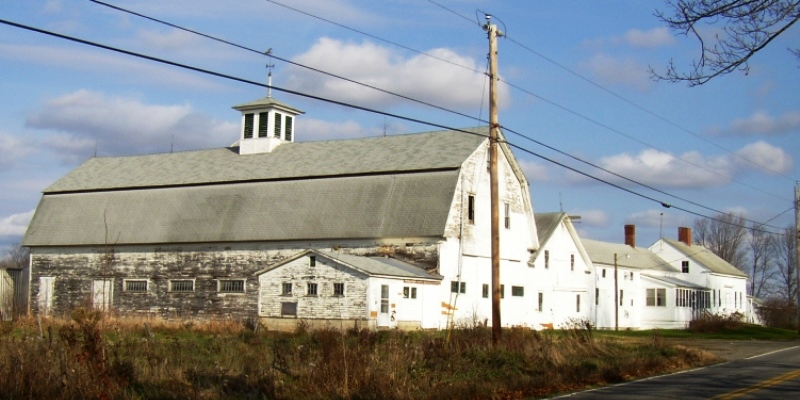
![Skowhegan Grange (2003) [demolished] Skowhegan Grange (2003) [demolished]](https://maineanencyclopedia.com/wp-content/uploads/03110801-Copy-280x210.jpg)
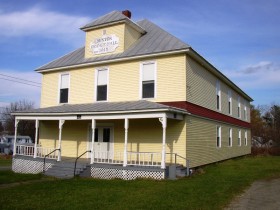
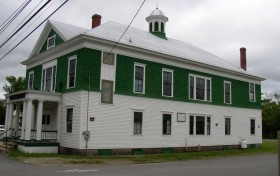

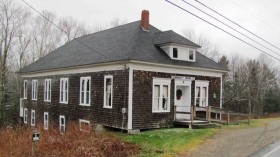
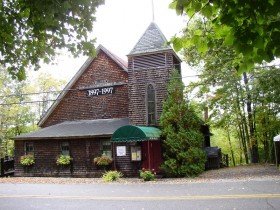
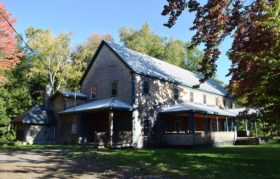
The Skowhegan Grange was not demolished!
It stands alive and well, still under renovation for a return to mixed use and public gathering. I am a co-owner of the building, along with Stephen Dionne.